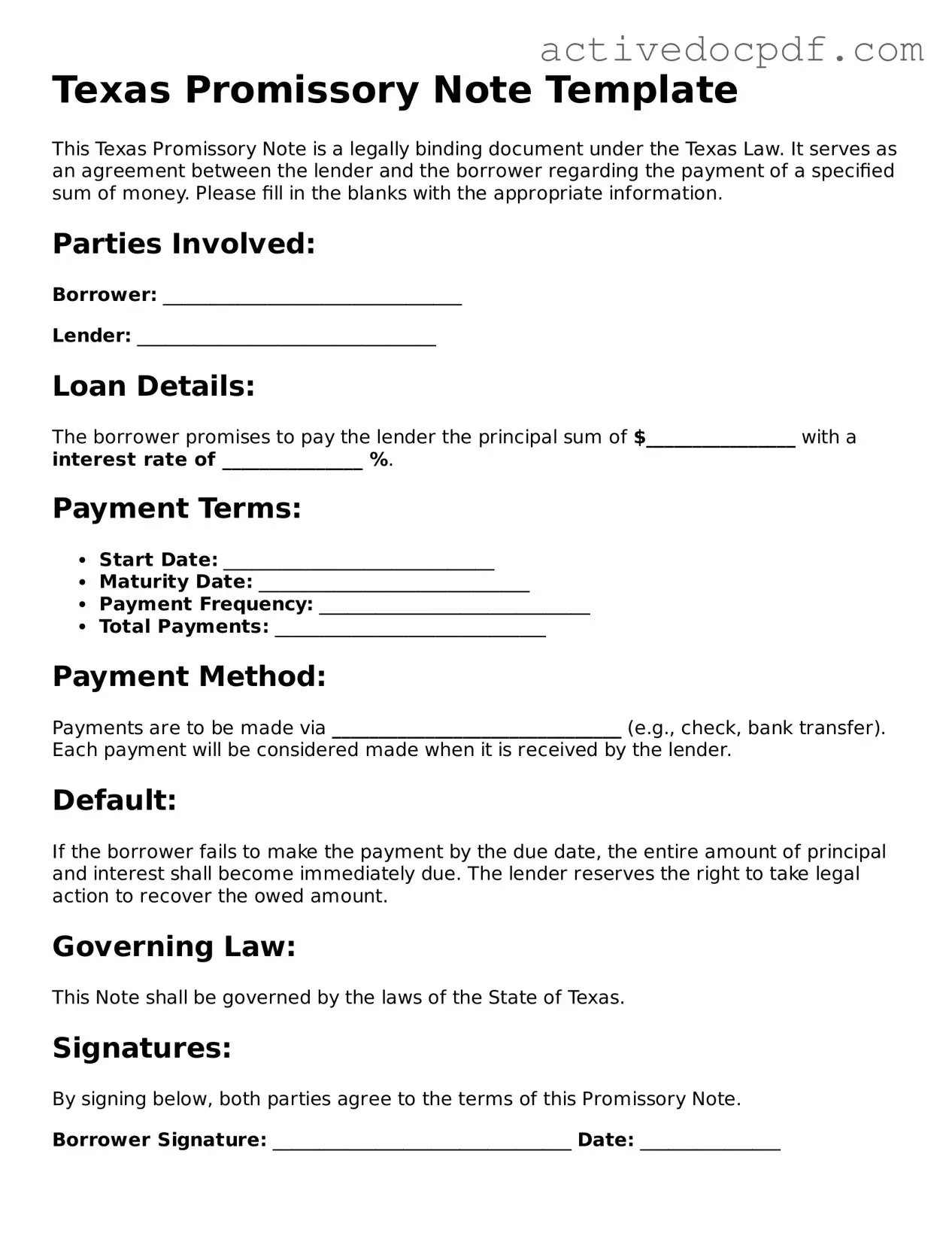What is a Texas Promissory Note?
A Texas Promissory Note is a written agreement in which one party promises to pay a specific amount of money to another party at a designated time or upon demand. This document outlines the terms of the loan, including the principal amount, interest rate, and payment schedule.
Who can use a Texas Promissory Note?
Any individual or business in Texas can use a Promissory Note. It is commonly used in personal loans, business transactions, or any situation where one party lends money to another. Both lenders and borrowers should ensure they understand the terms before signing.
A typical Texas Promissory Note includes:
-
The names and addresses of the borrower and lender
-
The principal amount of the loan
-
The interest rate
-
The payment schedule
-
Any late fees or penalties
-
Signatures of both parties
Is a Texas Promissory Note legally binding?
Yes, a properly executed Texas Promissory Note is legally binding. Once signed, both parties are obligated to adhere to the terms outlined in the document. If either party fails to comply, the other party may have legal recourse.
Do I need a lawyer to create a Texas Promissory Note?
While it is not legally required to have a lawyer draft a Promissory Note, consulting with one can be beneficial. A lawyer can help ensure that the document complies with Texas laws and meets the specific needs of both parties.
What happens if the borrower defaults on the loan?
If the borrower defaults, the lender may take several actions, including:
-
Contacting the borrower to discuss the missed payments
-
Assessing late fees as outlined in the Promissory Note
-
Initiating legal proceedings to recover the owed amount
It is important for both parties to understand the consequences of defaulting before entering into the agreement.
Can a Texas Promissory Note be modified?
Yes, a Texas Promissory Note can be modified, but both parties must agree to the changes. It is recommended to document any modifications in writing and have both parties sign the updated agreement to avoid misunderstandings.
How do I enforce a Texas Promissory Note?
To enforce a Texas Promissory Note, the lender may first attempt to resolve the issue directly with the borrower. If that fails, the lender can file a lawsuit in a Texas court. Having a signed Promissory Note serves as evidence of the loan agreement, which can strengthen the lender's case.
Where can I find a Texas Promissory Note template?
Templates for Texas Promissory Notes can be found online through various legal document websites. It is important to choose a reputable source to ensure the template complies with Texas law. Customizing the template to fit the specific terms of the agreement is essential.
